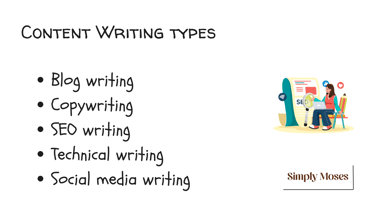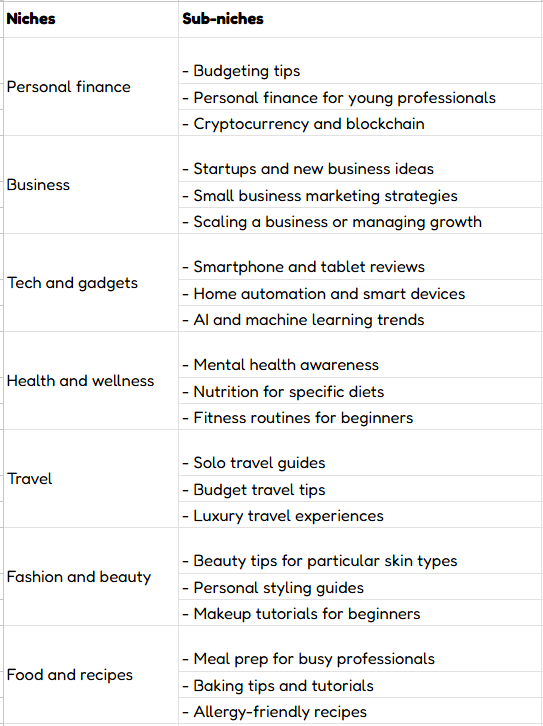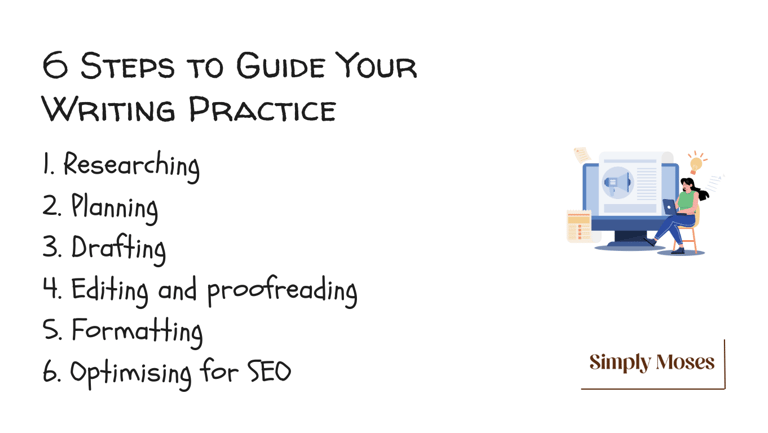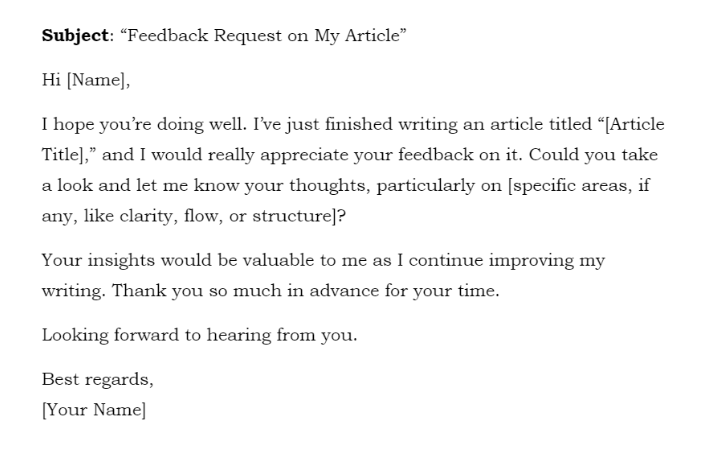🛑 Stop Guessing & Take Action Today!—Limited seats to ensure personalised attention! 👉 Learn More.
How to Get Started With Content Writing: 5 Practical Steps for Beginners
Discover 5 practical steps to get started with content writing. Learn the ropes and build your content writing skills.
By Moses Attamah
11/1/20244 min read


If you're ready to learn content writing, this post is for you.
Here are 5 practical steps to help you learn the ropes and build your content writing skills:
Understand the content writing basics.
Choose your niche or topic.
Read and analyse existing content.
Practice, practice, practice.
Learn from feedback.
How to get started with content writing step by step
I have discussed these steps below.
1. Understand content writing basics.
Here are ways to go about this:
I. Learn what content writing is all about.
Know the industry demand, its importance in digital marketing, and the skills needed to get started.
This guide already provides a great starting point for you.
II. Know the different types of content writing.


Content writing types refer to the specific kind of writing based on its purpose, the target audience, and the style used.
Examples include:
Blog writing: This is writing informative articles.
Copywriting: This is for persuading or selling products and services.
SEO writing: This entails writing optimised content to rank on page 1 of Google.
Technical writing: This is writing clear, instructional documents on technical topics.
Social media writing: This is creating engaging, brief posts for social media platforms.
To learn more, see this post on the types of content writing.
III. Get familiar with different content writing formats.
Content writing formats refer to the structure or layout of the content, or how you organise and present it.
Examples include:
Listicles: Articles written in list format
How-to guides: Step-by-step tutorials or instructional content
Interviews: Question-and-answer format
Case studies: Structured stories of success or results
FAQs: A series of questions and answers addressing common concerns.
You can apply these formats to various content writing types.
2. Choose your niche or topic.
A niche is a specific topic or area you focus on when creating content.
It’s like your little corner where you become an expert in a particular thing.
Niching down helps you:
Focus on one area where you can learn more
Attract an audience interested in the same subject as you
Become an expert by knowing a lot about that topic.
Here are 2 ways to choose your niche:
I. Identify topics that interest you.
When you're really into a topic, writing about it comes easily and feels more enjoyable.
Trust me: You don’t want to write about topics you’re not interested in or knowledgeable about.
Some examples of niches or topics in content writing include:
Food and recipes
Fashion and beauty
Health and wellness
Travel and adventure
Tech and gadgets
Business and entrepreneurship
Content marketing.
So, what topics do you love? Choose the best among them.
II. Identify the subtopics or sub-niches.
Now, you have chosen your topic of interest. Great!
The next step is to find out the sub-niches or specific areas of that topic your audience might be interested in.
This is because you can’t know everything about a topic.
Example:
If you love fashion, find the small areas of fashion your readers are likely interested in (like wardrobe tips, fashion news/trends, or styling advice).
Examples of niches and sub-niches in content writing:


3. Read and analyse existing content.
Here’s how to go about this:
I. Read high-quality blog posts and articles.
Find samples of published articles similar to the topics you want to write about.
Note:
Ensure they’re high-quality blog posts and articles from successful content writers.
Then, read them carefully.
II. Analyse the articles.
Pay attention to what works and what doesn't in the articles.
As you analyse them,
Consider how they engage you as a reader and how they're structured.
Look at how the headlines are written, how the sentences and paragraphs flow, and how the ideas are presented.
Remember to note down what you learn along the way.
4. Practice, practice, practice.
Here's the truth:
Knowledge is one thing, but practice transforms knowledge into a skill.
Practice is the bridge between information and true expertise.
So, practice content writing regularly.
To get started,
Pick a topic from your list of selected topics.
Start writing daily or a few times a week. Even short pieces will help you build the habit.
Remember:
Focus on writing consistently over perfection.
Regular practice is key to improving.


Meanwhile, here are 6 steps to guide your practice:
Researching
Planning
Drafting
Editing and proofreading
Formatting
Optimising for SEO.
Here's a summary of the steps:
Step #1. Researching
Research ensures that your writing is on point, interesting, and helpful to your audience.
It involves:
Understanding the topic
Knowing your audience
Finding relevant keywords
Analysing what competitors have written.
Here’s our guide on how to research for content writing to learn more.
Step #2. Planning
Planning your content before writing can help you write smoothly without any distractions.
It lets you create content that's easy to understand, engaging, and effective.
To learn more, see how to plan content writing for beginners.
Step #3. Drafting
Drafting is the core part of content writing. It’s where you focus on getting your ideas down.
Here’s how to write your first draft in 5 practical steps.
Step #4. Editing and proofreading
Go through your draft and improve its clarity, grammar, and structure.
Use this simple guide to edit your own writing.
Step #5. Formatting
After you edit and proofread the draft, format it properly.
This makes your content interesting and engaging to readers.
Learn how to format your content.
Step #6. Optimising for SEO
Optimising your article for SEO effectively improves the visibility of your content and attracts more readers to it.
See our guide on SEO optimisation strategies to learn more.
5. Learn from feedback.
Share your article with friends or people interested in your growth in content writing and ask for constructive feedback.
Here’s a sample you can use to ask for feedback on your completed article:


This helps you do better and makes you feel more confident.
Finally, starting with these small, manageable steps will help you gain confidence as a content writer.
